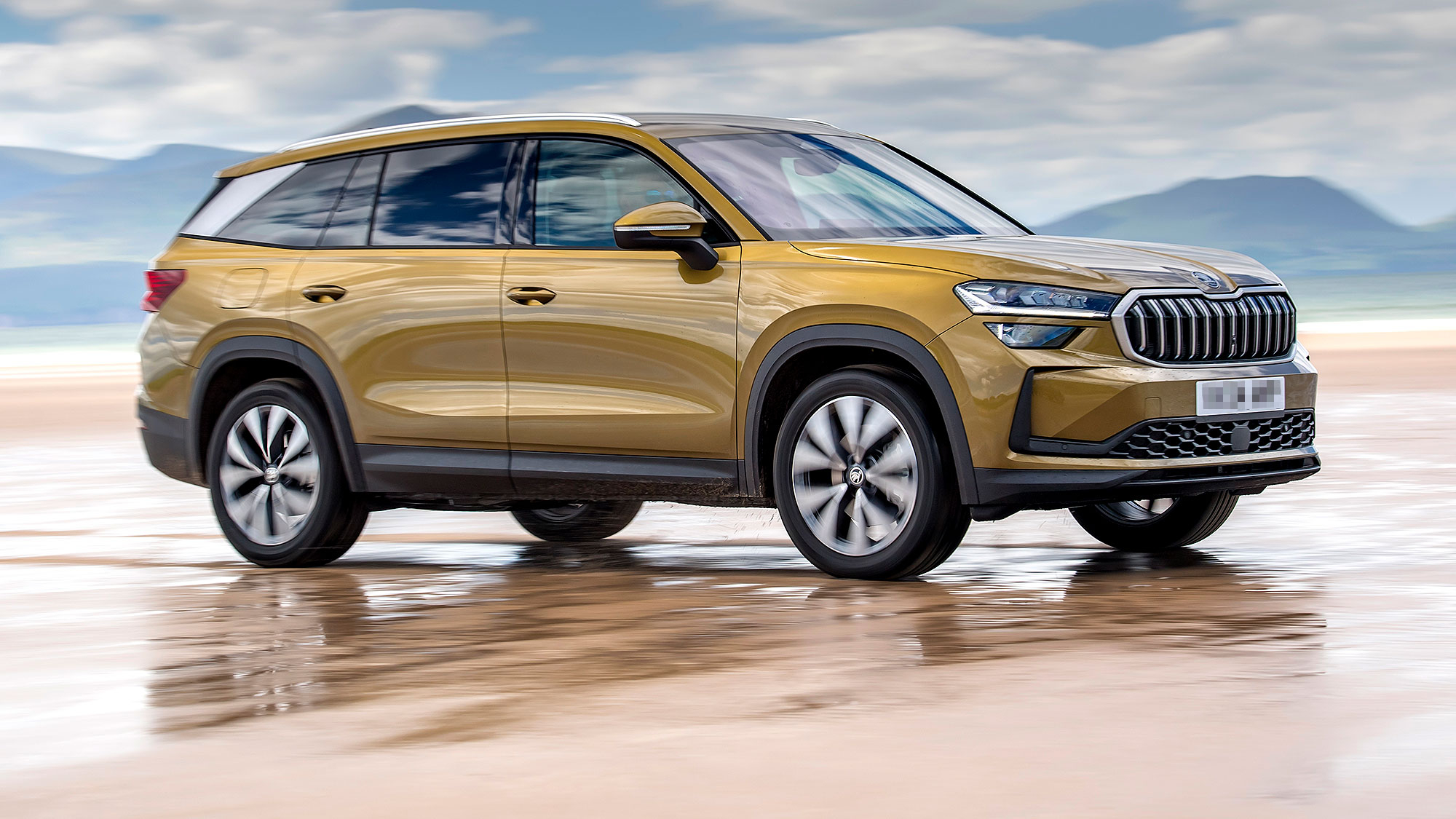Finding the right child car seat and fitting it safely can be confusing, especially if you’re still deciding which Motability Scheme vehicle to get next.
Choosing the right child car seat will help keep your child safe and let you travel with confidence.
We’ll help you understand which child car seat should go in which vehicle, including if you have a Wheelchair Accessible Vehicle (WAV).
- Get to know your responsibilities
- Choose the right seat
- ISOFIX and checking your seat
- Keep your child rear facing
- WAVs and adaptations
- Check your child’s seat regularly
Get to know your responsibilities
UK law says all children travelling in the front or rear seat of any car must use the correct child car seat until they’re 135cm tall or 12 years old, whichever one they reach first. After this, they can swap to no booster seat and an adult seatbelt.
A child’s neck and head need more support than an adult. This changes as they get older, which means how you strap your child in needs to change too.
Car seats are very effective at preventing injury in children, during a crash. If something like this happens, you should always replace your child’s car seat, as it might have become unsafe.
Child safety seats reduce fatal injury by 71% for infants, 54% for toddlers, and 45% for children aged four to eight, according to Safe Ride 4 Kids
UK car seats never have expiry dates. Instead, manufacturers recommend you replace or upgrade your child seat after five years, to keep up with the latest innovations. Some seats are designed to last much longer than that, and those are fine too.
Check your vehicle’s seat first
Some vehicle seats should never have a child car seat fitted on them. You can only fit a child car seat if:
- Your vehicle’s seat belt has a diagonal strap, unless your seat is specially designed for use with a lap seat belt
- Or you’ve fitted it using ISOFIX
And it’s important you:
- Deactivate any front airbags before you fit a rear-facing baby seat in the front seat of your vehicle
- Never fit a child car seat in a side-facing seat
The same rules apply for children with a disability, but they can use a disabled person’s seatbelt or a child restraint designed for their needs.
Your child’s doctor can issue a certificate if your child is not able to use a restraint or seatbelt because of their condition.
Choose the right height-based seat
i-Size seats are all based on the height of your child, so make sure you check the seat you’re choosing suits their current height.
They all need to be rear facing, until your child is over 15 months old. Then you can start using forward-facing seats.
You can only use EU-approved i-Size seats in the UK. These all have a handy label to help you spot them. It’s an ‘E’ inside a circle, along with ‘R129’:
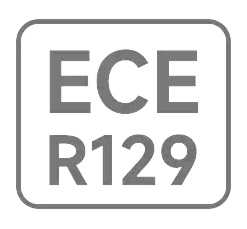
Image credit: Shopify
Choose the right weight-based seat
Other seats are based on the weight of your child, so check your child’s weight and note it down. Then look for seats that meet their current weight.
You can only use EU-approved weight-based seats in the UK. The label for these is an ‘E’ inside a circle, along with this ‘ECE R44’ logo:
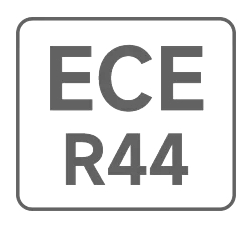
Image credit: Shopify
ISOFIX and checking your seat
It’s important you check the car seat you’re buying is compatible with the Scheme vehicle you’re choosing.
One thing you’ll find yourself looking for is whether your car has something called ISOFIX.
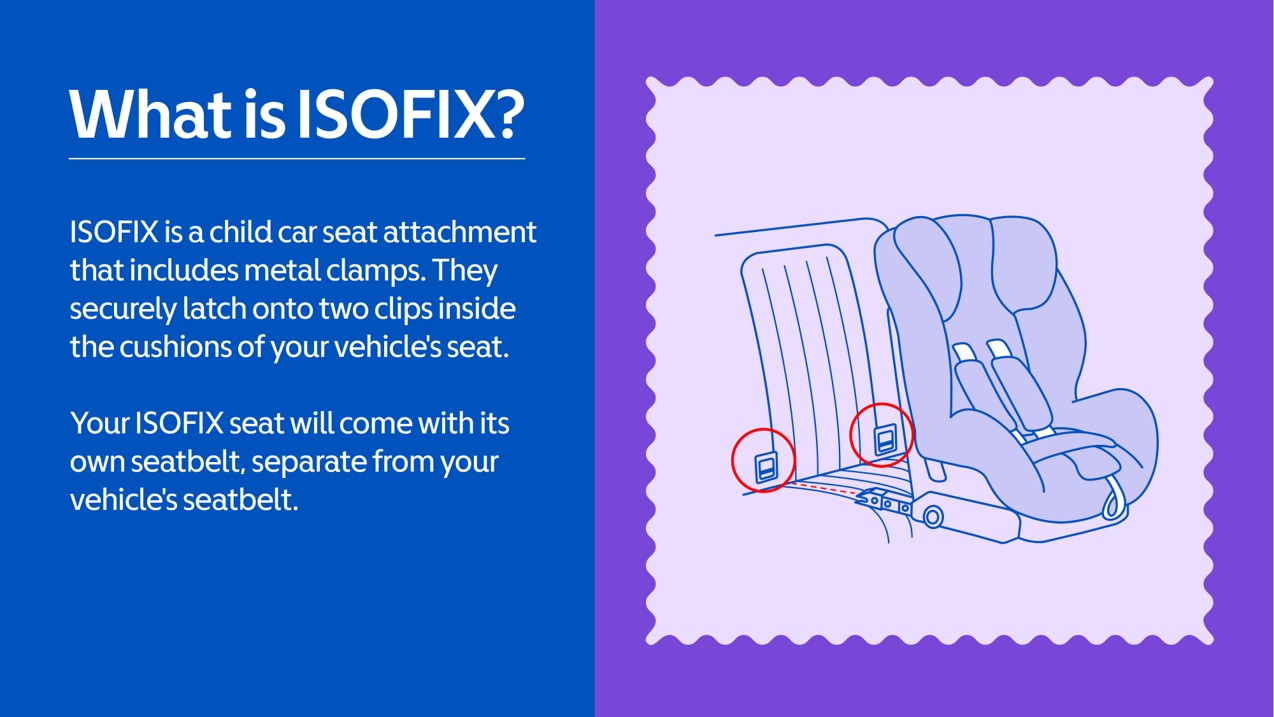
There’s also a tether on your child seat that hooks onto a latch on the back your car seat, for extra security.
Here’s everything you need to know about ISOFIX:
- Manufacturers build ISOFIX points into vehicles when they make them
- You’ll never use your vehicle’s seat belt, as your ISOFIX seat will come with its own
- Look for ISOFIX between the base and back of the seats. Or ask your dealer or supplier
- Once you have your vehicle, check your vehicle handbook if you need a reminder
If there are no ISOFIX points in the vehicle you want, you’ll need to choose a car seat that can be fitted with a standard vehicle seatbelt.
Keep your child rear facing for as long as you can
Rear-facing child seats are up to five times safer than front-facing seats, according to Motor Schools Association of Great Britain. It gives them greater protection for their head, neck and spine.
It’s natural to want your child to face forward, but it’s best to keep them rear-facing for as long as you can. That means at least up to 15 months old.
Once they’re over the maximum weight or height for their car seat, it’s time to swap to a forward-facing seat.
Babies and children are up to 95% safer when using rear-facing car seats, according to Wigan Council
Child car seats in WAVs and with adaptations
Looking to get adaptations or a WAV on the Scheme? If so, you’ll have things like swivel seats, specialist car seats, and WAV conversions to think about. Talk to your adaptations installer or WAV supplier about these.
The good news is your WAV can have ISOFIX too, depending on the model you go for and how the seats are arranged.
If your WAV was converted from a newer base vehicle, it’s much more likely to have ISOFIX. But always check first, including where these are located inside the WAV.
Check your child’s seat regularly
Even if you’re keeping your seat in the same vehicle all the time, check it regularly. Straps can loosen over time, or clips can become unhinged.
Then every now and then, give it a quick look over. You might need to adjust the headrest as your child grows. Or you might even notice some wear and tear.
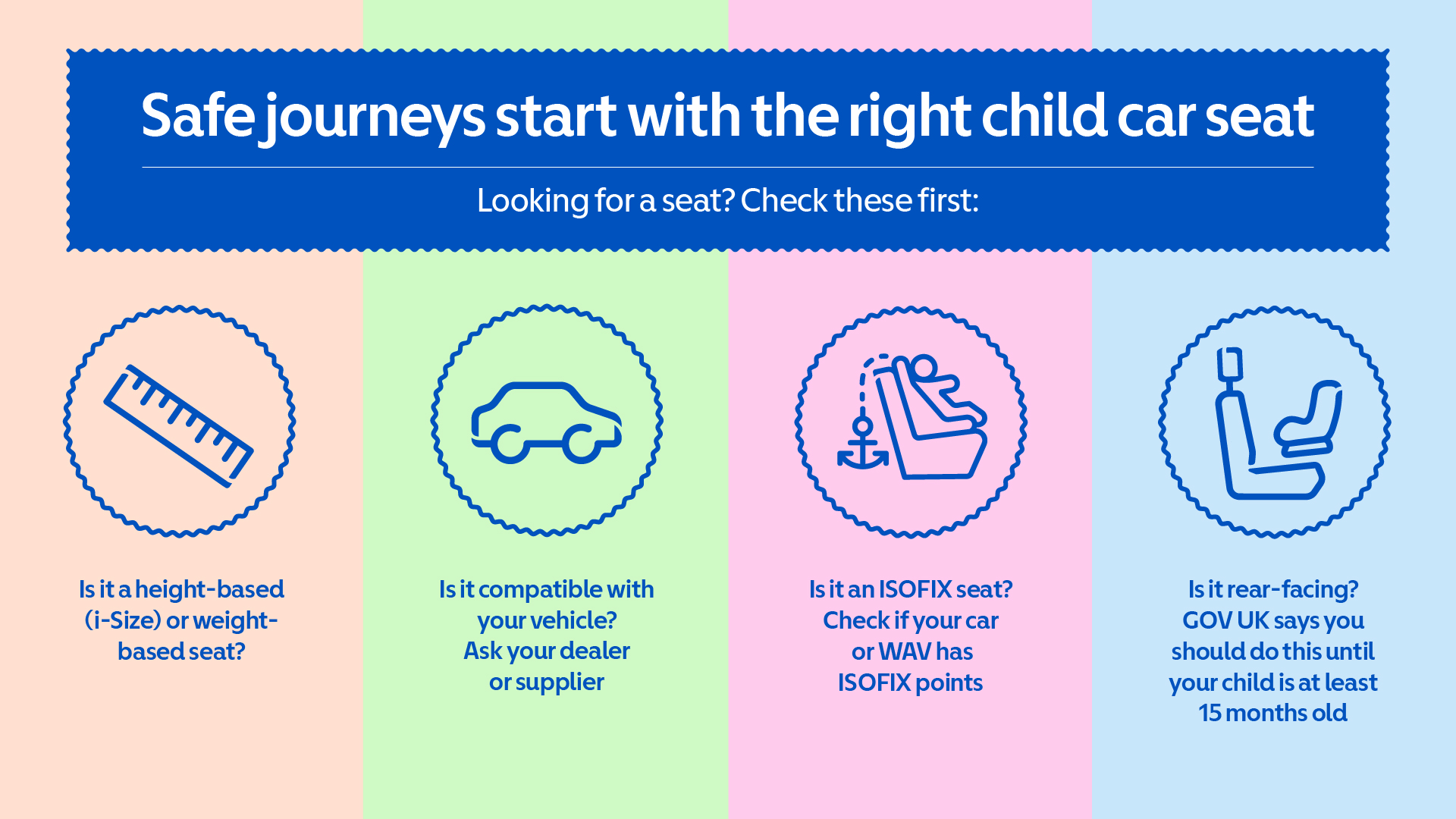
Need some extra help?
If you’re interested in learning more, Child Seat Safety offers courses for anyone responsible for fitting child restraints. They cover different needs, including transporting other people’s children.
You can also look at Which?’s guide to the best baby or child seats in 2025. Then when you’re ready, take the Royal Society for the Prevention of Accidents (RoSPA)’s handy checklist with you. Tick these off as you go, and you’re sure to find a safe seat your child will love.
Learn more about the Motability Scheme
If you receive a qualifying mobility allowance you can use it to lease a car, Wheelchair Accessible Vehicle (WAV), scooter or powered wheelchair on the Motability Scheme.
You’ll get a brand-new vehicle and our all-inclusive package. We cover your insurance, servicing, maintenance and breakdown. And we’ll support you with charging, if you get an electric car.
Related articles
Tips to help you get used to your new Motability Scheme vehicle
How to spot the signs that you’re too tired to drive
How to stay safe on smart motorways
![]()



